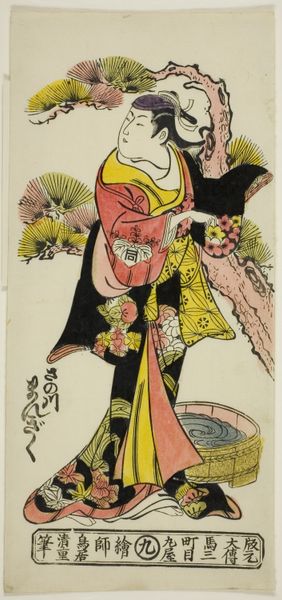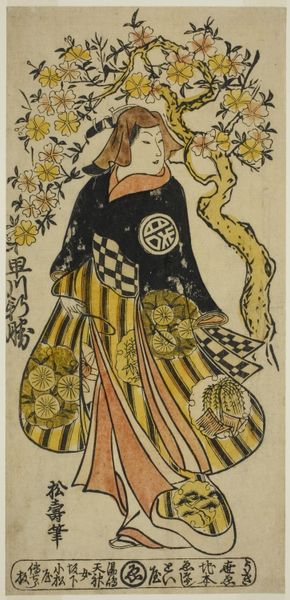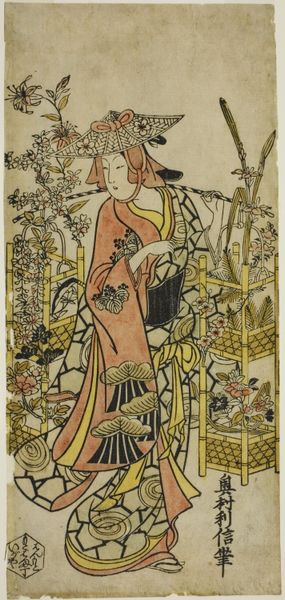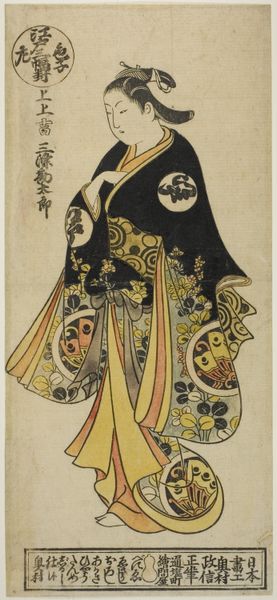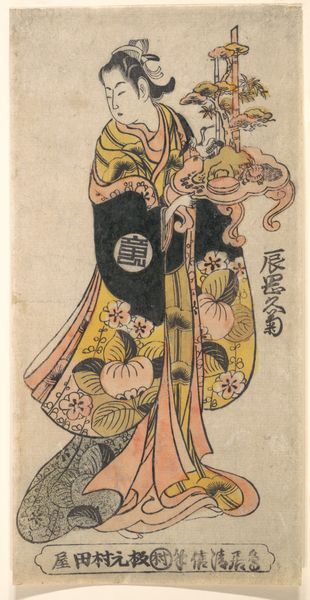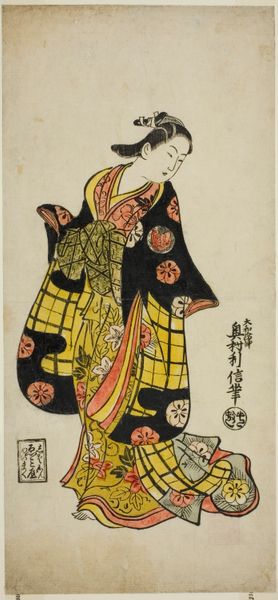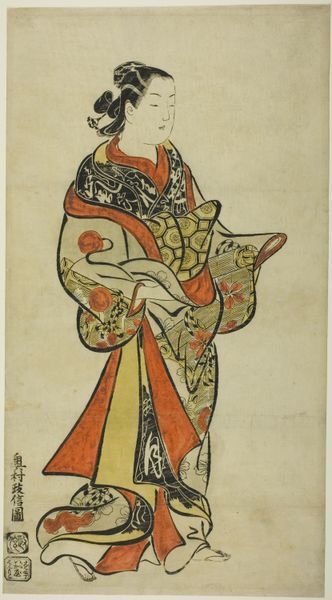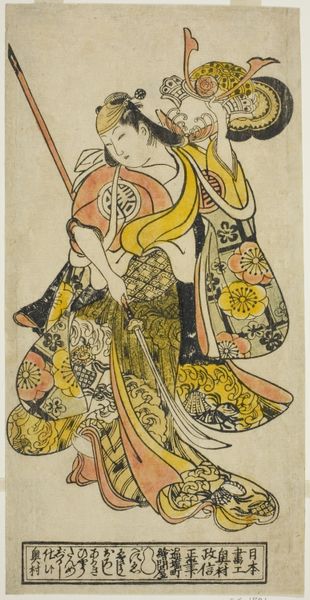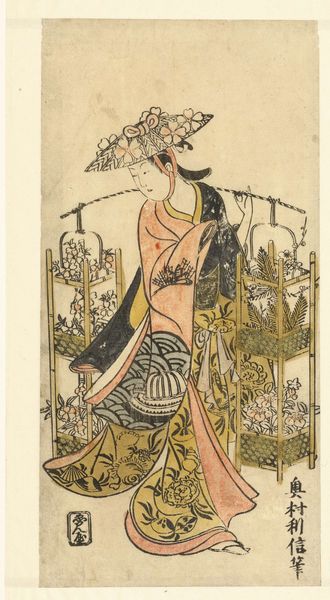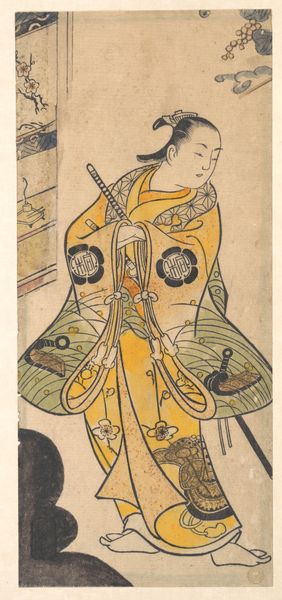
The Actor Tomizawa Montaro I as Miyako no Mae in the play "Izu Genji Horai Yakata," performed at the Ichimura Theater in the eleventh month, 1736 1736
0:00
0:00
#
portrait
# print
#
asian-art
#
ukiyo-e
#
genre-painting
Dimensions: 31.5 × 15.0 cm
Copyright: Public Domain
Okumura Masanobu created this print around 1736, a woodblock print which depicts the actor Tomizawa Montaro I in the role of Miyako no Mae. During the Edo period in Japan, Kabuki theater was a vibrant, yet socially complex, form of entertainment. Male actors, like Tomizawa Montaro, often played female roles, a practice rooted in both censorship and artistic tradition. This convention complicates our contemporary understanding of gender and performance. The detailed rendering of the actor's costume, with its elaborate patterns and colors, reflects the importance of visual spectacle in Kabuki. Prints such as these served as promotional material, but they also captured a sense of the ephemeral nature of performance, freezing a moment in time. Consider how the artist uses line and color to convey not just the likeness of the actor, but also the emotional tenor of the play. Ultimately, this print is a window into a world where identity was fluid and performance allowed for a blurring of social boundaries, echoing deeper questions about the construction of self.
Comments
No comments
Be the first to comment and join the conversation on the ultimate creative platform.
